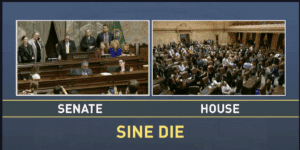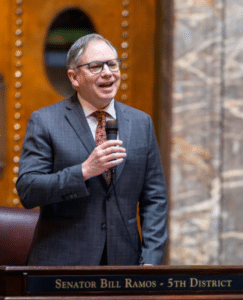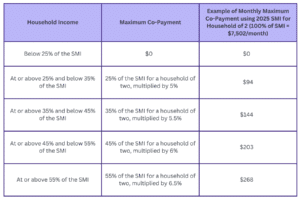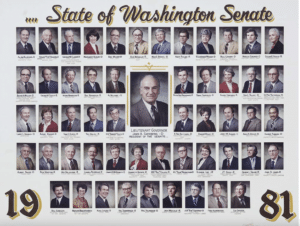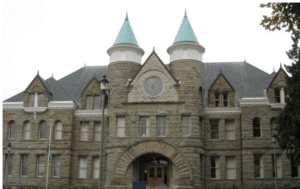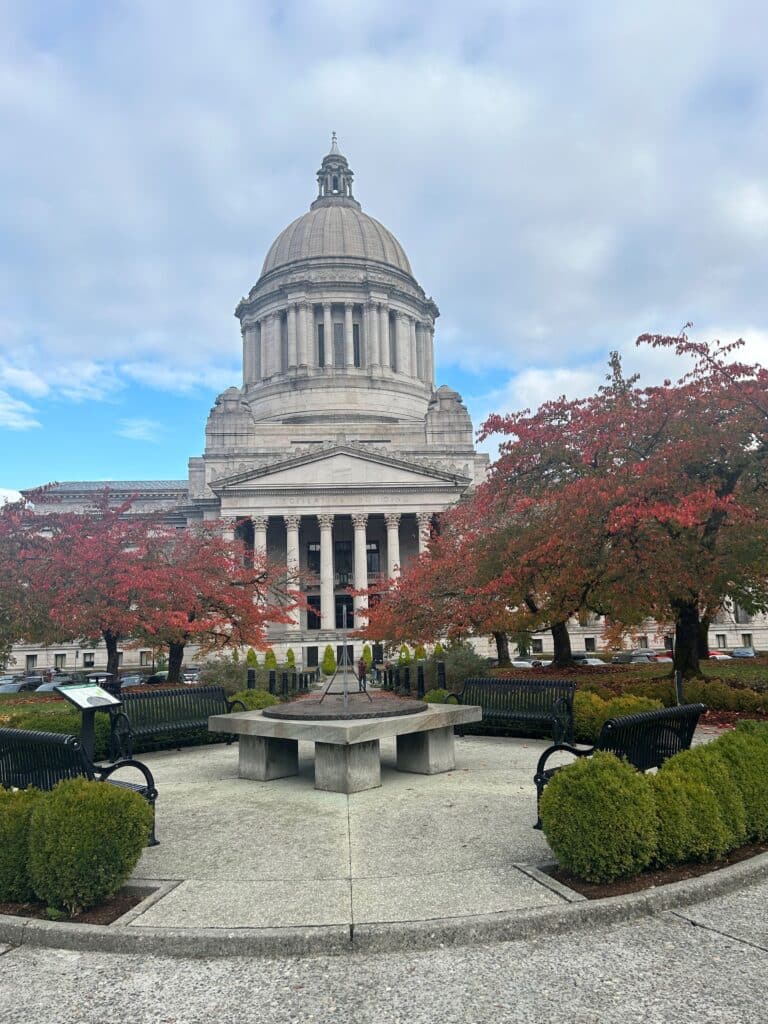
(Photo Courtesy: Erica Hallock)
During the legislative interim, Start Early Washington releases periodic updates about the latest activities in Olympia.
Most Recent Revenue Forecast Shows Additional Drop in State Revenues
On September 23, the State Economist released the latest state revenue forecast. The forecast projects revenues will be down $903M from the June forecast for the 2025-27 and 2027-2029 biennia. Specifically, the forecast shows reduced receipts of $412M for the 2025-27 biennium and $477M for the 2027-29 biennium, with additional “spare change.”
Looking back, the June revenue forecast showed a drop in revenue of $720M from the budget passed by the Legislature and signed by the Governor. These two forecasts combined leave budget writers with at least $1.62B in less revenue over the four-year budget outlook.
Primary reasons for the drop in projected revenue include:
- Slowing national and state economies.
- Imposition of tariffs bringing increased prices and impacting consumer activity.
- Federal actions creating overall uncertainty.
- A slowing construction sector (see September 25, 2025 Spokesman Review article).
The biggest drop in revenue in our state is a result of reduced sales tax receipts and real estate excise taxes.
It is important to note this forecast does not account for impacts associated with federal passage of H.R. 1 (impacting programs such as Medicaid and SNAP); mandatory caseload adjustments; rising costs related to the state’s liability settlements and judgments and other increasing expenses. There is growing concern that given this widening budget gap, lawmakers will be forced to make untenable budget cuts in the 2026 legislative session.
The Washington State Standard has an article recapping the forecast and reactions from lead budget writers.
The next revenue forecast will be released in November along with an updated caseload forecast. This information will inform Governor Ferguson’s proposed supplemental budget which will be released mid-December.
State Agencies Tracking “People” and Budgetary Impacts of Federal Action
As noted above, federal action has significantly affected our state’s fiscal situation, largely due to tariffs and H.R. 1 which will have significant impacts on foundational programs like Medicaid and SNAP.
In recent weeks, the Governor’s Office of Financial Management (OFM) released two analyses to describe potential impacts to the state. The first relates to federal tariff actions. As the most trade-dependent state in the country, the tariff impacts are significant, with OFM projecting they could cost Washington state $2.2B over the next four years along with the loss of 31,900 jobs.
Additionally, OFM produced a tracker (which they plan to update monthly) to demonstrate H.R. 1’s impacts on people and the state budget. Given that the Federal Administration has yet to release many of the bill’s implementation details, some of the impacts are currently unknown, but are expected to be significant, nonetheless.
The Supplemental Nutrition Assistance Program (SNAP) is the first program to be impacted, with the extension of work requirements to previously excluded populations including former foster youth and those with dependent children. H.R. 1 also imposes eligibility limits based on citizenship and residency status starting in this state fiscal year. This shift impacts an estimated 33,000 individuals.
On October 16, the Senate Ways and Means Committee will hold a work session at 10:00 a.m. that looks at the federal changes and state implications of H.R. 1 as it relates to Medicaid and food assistance programs. The work session can be watched on TVW.org live or later via TVW’s media archives section.
State Agencies Submit “Decision Packages” for Consideration in Governor Ferguson’s First Solo Budget
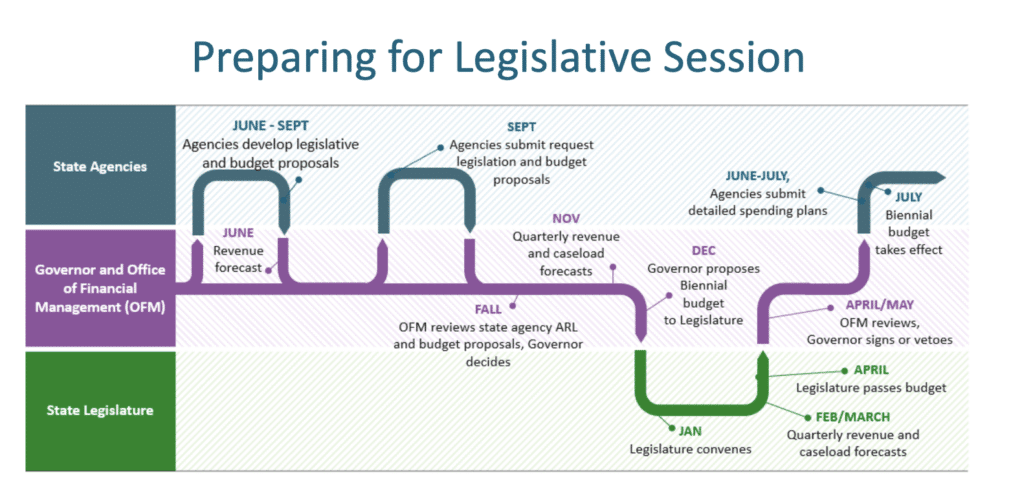
(Photo Courtesy: Department of Children, Youth, and Families)
Earlier this month, state agencies submitted requests for inclusion in Governor Ferguson’s first solo budget. These requests are called “Decision Packages” and can be found at abr.ofm.wa.gov.
Due to the state’s fiscal situation, the Governor’s Office of Financial Management (OFM) directed state agencies to limit budget requests to mission-critical items. In short, now is not the time for new ideas.
In the world of early learning, the following Department of Children, Youth and Families Decision Packages relate to Working Connections Child Care:
1. Working Connections Child Care Caseload Adjustment – $32.35M State General-Fund (2025-27 biennium)
- ESSB 5752 assumed budget savings beginning July 2025 due to an adjustment made to the 12-month authorization policy. Prior to the passage of ESSB 5752, 12-month authorization began when a family’s care was expected to begin. ESSB 5752 changed the policy so 12-month authorization begins when a family is determined eligible.
- This policy change was intended to generate budget savings, but these savings cannot start to accrue until July 2026 without negatively impacting families’ current 12-month eligibility.
- This technical Decision Package requests $16.8M in State Fiscal Year 2026 and $15.6M in State Fiscal Year 2027 in increased funding to offset these assumed savings.
2. Working Connections Child Care Information Technology Eligibility Impacts – $15.55M State General-Fund (State Fiscal Year 2027) and $29.38M State General-Fund (State Fiscal Year 2028)
- This Decision Package would fund Information Technology needs to implement the portion of ESSB 5752 that altered how 12-month authorization for Working Connections Child Care is calculated.
- This Decision Package requests funding to account for the additional time it will take for the Department of Social and Health Services, which administers the Information Technology system for Working Connections Child Care, to update the “barcode” system to reflect the new policy.
- DCYF expects it will now take until March 2027 to implement the Information Technology change needed to support the new 12-month authorization calculation, delaying implementation of assumed budget savings.
- This funding request is intended to offset assumed savings.
3. Working Connections Child Care Backfill Funding – $9.38M State General-Fund (State Fiscal Year 2026)
- DCYF requests $9.38M State General Fund to replace one-time federal Child Care and Development Funding (CCDF) that was used during State Fiscal Year 2025.
- DCYF used these CCDF funds (which were planned for use in State Fiscal Year 2026) to cover higher than anticipated caseload costs for Working Connections Child Care.
- Actual Working Connections Child Care caseload in State Fiscal Year 2025 exceeded the February 2025 caseload projections as well as the appropriated level. In short, more families accessed Working Connections Child Care than projected and budgeted.
4. Mandatory Caseload Adjustment – Placeholder
- As is common practice among state agencies, DCYF submitted this “placeholder” in advance of the November caseload forecast. It will be updated to reflect changes in caseloads such as Working Connections Child Care, the Early Childhood Education and Assistance Program (ECEAP) and Early Support for Infants and Toddlers (ESIT).
Next Steps
Two meetings await that will provide key information about “inputs” (revenue) and required “outputs” (mandatory caseloads). November 18th is the next meeting of the state’s Revenue Forecast Council. November 12th is the next meeting of the state’s Caseload Forecast Council. The Caseload Forecast Council provides information on updated caseload projections – the outputs where the state must spend money. This includes information about our projected caseloads for programs like K-12, prisons, Medicaid, etc. These two forecasts will inform Governor Ferguson’s budget.
Over the next couple of months, OFM staff will review Decision Packages and following the November 18th Revenue Forecast, they will work with Governor Ferguson and his team to finalize his proposed Supplemental Budget that will be released mid-December. At that point, we will know which of these Decision Packages are included in Governor Ferguson’s proposed budget. From there, focus will turn to the Legislature.
State’s Self-Insurance Liability Account Underwater
I don’t typically review the Department of Enterprise Services’ Decision Packages, but I did review one related to the state’s “Self-Insurance Liability Account,” or SILA. This account has been garnering a great deal of attention of late, with a September 24th Washington State Standard article and a June 4th Senate Law and Justice Committee work session on tort liability.
You may be asking why I am writing about this in a newsletter about early learning. There are a few reasons, including the ballooning impact to the state budget along with DCYF’s role.
The Self-Insurance Liability Account was established to cover costs related to the state’s liability settlements and judgments, insurance premiums and legal defense fees. Each biennium, a third-party actuarial report estimates expenses from claims, judgments and settlements. The most recent actuarial report from June 2024 estimated the state’s liability for outstanding tort liability stood at $2.5B.
Much of the state’s exposure comes from its child welfare and corrections systems and, as a result, the two state agencies most impacted are DCYF and the Department of Corrections. In recent years, the statute of limitations was lifted, allowing victims of abuse to pursue judgments and settlements. This has led to a growth in cases filed and subsequent payments via judgments and settlements. This summer, a former Spokane woman was awarded a $42 million judgment for sexual abuse she endured as a child. A Spokane jury found the Department of Corrections negligent in supervising the perpetrator of the abuse (the child’s stepfather) and DCYF’s predecessor negligent in investigating allegations of abuse.
The SILA had a negative cash balance of ($570M) at the end of State Fiscal Year 2025. Additionally, there is an ongoing need for funding to support the growth in expenses to ensure the account remains solvent.
In addition to the $570M needed to make the account whole for the fiscal year we just concluded, roughly $1.3B is needed for the remainder of the 2025-27 biennium and anywhere from $2.1B – $3.3B in additional funding is estimated to be needed for the 2027-29 biennium.
I expect this issue to be a major focus during the 2026 legislative session.
Finally, Some Good News!
The Department of Commerce is distributing up to $55 million for construction projects that will serve new children and/or maintain existing capacity through Working Connections Child Care (WCCC) and/or the Early Childhood Education and Assistance Program (ECEAP). The process to apply for expansion grants and maintenance grants is a single application this year. Apply online through Zoom Grants before October 31 at 5:00pm.
Early Learning Facilities (ELF) Grants are more accessible with these recent program changes championed by ELF Group advocates in 2024 and 2025:
- Matching funds are no longer required for applicants experiencing financial hardship.
- Award caps have been eliminated.
- Early Childhood Education and Assistance Program (ECEAP) conversion from part-day to full-day slots is clarified as a qualifying expansion.
Application Assistance is available through the Imagine Institute. Applicants can contact the Imagine Institute at 206-492-5249 for support in their preferred language, including:
- Understanding grant requirements and eligibility.
- One-on-one technical assistance with applications.
- Assistance in gathering resources.
- Reviewing and providing feedback on grant narratives or proposals.
- Offering guidance to help providers understand and align with project goals.
- Sharing examples to illustrate strong alignment, not for replication.
Please continue to follow Start Early’s Notes from Olympia to stay up to date on the latest news out of Olympia on the budget and policy fronts.






